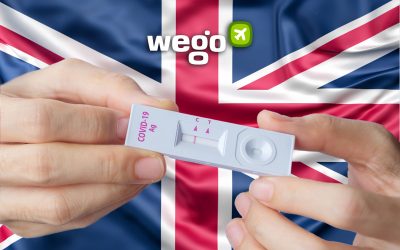This article is reviewed regularly (on a monthly basis) by Wego’s editorial team to ensure that the content is up to date & accurate.
Updated 17 September 2021
While the US has been swift and successful in controlling the pandemic, the Centers for Disease Control and Prevention (CDC) has warned about increasing COVID-19 cases, some of which are from new variants, predominantly the delta variant. Ultimately, testing remains vital to help reduce the spread of the virus. With the development of at-home coronavirus tests, there are several ways to get tested in the safety and privacy of your own home.
Keep reading to find more about self-test kits and home testing options available in the US.
Table of Contents
What is a self-test COVID-19 kit?
If you need to be tested for COVID-19 and can’t get tested by a healthcare provider, you can consider using either a self-collection kit or a self-test that can be performed at home or anywhere else.
Self-tests can be used by anyone who is symptomatic regardless of their vaccination status. Unvaccinated persons with no COVID-19 symptoms can also use self-tests, especially if they were potentially exposed to someone with COVID-19.
Also called a “home test” or an “at-home test”, they are a safe and effective way to get tested without visiting an in-person site and potentially compromising your own or someone else’s health. These self-collection kits and tests are available either by prescription or over the counter, without a prescription, in a pharmacy or retail store. At present, self-collection kits and tests are used for the detection of current infection.
Self test kit brands
The US Food and Drug Administration (FDA) has authorized more than 10 direct-to-consumer at-home COVID-19 tests. In response to the COVID-19 pandemic, which warranted a public health emergency, the FDA approved all of these tests under emergency use authorization (EUA). Some of the brands authorized are Access Bio, Abbott Diagnostics, OraSure Technologies, and others.
How do they work?
If a physician has not ordered an at-home test for you, you can go to the provider’s website and order one yourself. The website will require you to fill out an intake survey, including a few questions about your health. The provider’s own physician will review your answers to determine if you could potentially be at risk or if you’re currently showing signs of symptoms.
Once they determine your eligibility, they’ll issue a test to be sent to you. Most of the test kits require payment upfront, though some offer insurance options or financial assistance. Some tests require a nasal specimen that can be collected using an anterior nasal swab or a nasal mid-turbinate swab. Other tests require a saliva specimen.
Once you’ve collected your sample, you’ll need to ship it back to the provider as soon as possible, either by mail or at a designated drop-off location. Most test kits provide prepaid shipping labels to make the process seamless.
Results typically take a few days and are delivered digitally. Some providers also offer virtual consultations, either during the collection process or to review the results.
If you test positive:
Stay isolated and inform any close contacts. Tell a healthcare provider about your positive test result and stay in contact with them during your illness. If your illness becomes severe, seek medical attention.
If you test negative:
Your current illness is probably not COVID-19. However, it is possible for a test to give a negative result in some people who have COVID-19. This is called a false negative. You could also test negative if the specimen were collected too early in your infection. In this case, you could test positive later during your illness.
Are at-home COVID-19 tests reliable?
At-home COVID-19 tests are processed in the same labs used by medical professionals at primary care providers and hospitals, and they are just as reliable and effective. That being said, it’s important to follow the instructions provided by the test kit provider to ensure the most accurate results.
When it comes to the testing method, at-home tests use either saliva or a nasal swab to collect samples. Studies show that these are equally accurate methods.
It’s also important to note that the current available at-home test kits don’t test for antibodies. These are all molecular tests and are only used to test for current infections.













